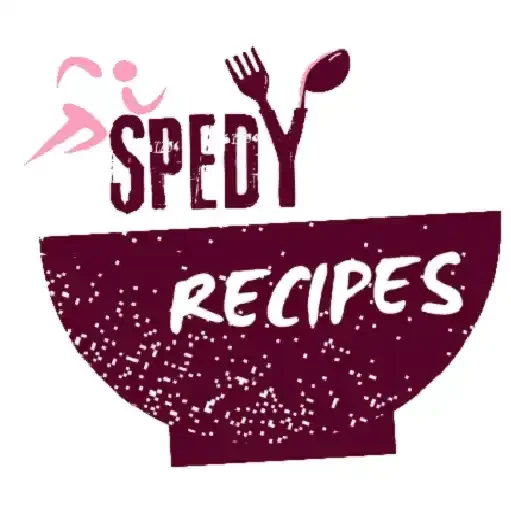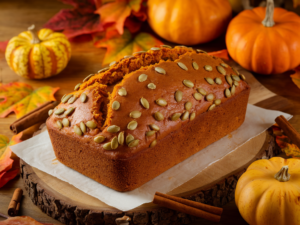Table of contents
Introduction to Gluten-Free Pumpkin Bread
There’s something magical about the smell of pumpkin bread baking in the oven, don’t you think? That warm, spicy aroma can make even the dreariest of days feel cozier. But for those of us who need to avoid gluten, traditional pumpkin bread can be off-limits. That’s where gluten-free pumpkin bread comes to the rescue! 🧡
This article dives deep into the world of gluten-free pumpkin bread what it is, how to make it, and how to solve common baking problems so you can enjoy a perfect loaf every time. Whether you’re a seasoned baker or a newbie, stick with me because we’re going to cover everything you need to know.
Why Gluten-Free Pumpkin Bread Is Popular
You might wonder, “Why all the fuss about gluten-free pumpkin bread?” Well, let me tell you, it’s not just for people with gluten intolerance or celiac disease. Gluten-free baking has gained popularity among those looking for healthier alternatives or exploring creative recipes that suit a variety of dietary needs. Plus, pumpkin bread is already a fall favorite it’s like autumn wrapped in a slice!
“Gluten-free baking isn’t just a necessity for some; it’s an art that turns challenges into opportunities for delicious creations.”
Benefits of Making Your Own Gluten-Free Pumpkin Bread
Homemade pumpkin bread has its perks. First off, you know exactly what’s going into it no mystery ingredients or unnecessary additives. It’s also a budget-friendly option, and let’s not forget the satisfaction of pulling a warm, golden loaf out of your oven. Who doesn’t love a kitchen filled with the scent of cinnamon and nutmeg? 🎃
Key Ingredients for Gluten-Free Pumpkin Bread
Choosing the Right Gluten-Free Flour
When it comes to gluten-free baking, the flour blend can make or break your recipe. Opt for a high-quality gluten-free all-purpose flour. Many blends include a mix of rice flour, tapioca starch, and xanthan gum, which mimic the elasticity of gluten. But if you’re feeling adventurous, try making your own blend it’s like crafting a potion in a wizard’s kitchen!
For more tips on creating gluten-free baked goods, check out our guide to making gluten-free apple pie, which shares insights into choosing the best gluten-free flour blends.
Pro Tip: Always check the label to ensure the flour is certified gluten-free. Cross-contamination is sneaky.
The Role of Pumpkin in the Recipe
Pumpkin isn’t just for flavor; it’s a powerhouse ingredient. It adds natural moisture, keeping your bread soft and tender. Plus, pumpkin is rich in vitamins A and C, so you’re sneaking in some nutrients while indulging in a treat. Win-win!
Sweeteners: What Works Best for Gluten-Free Baking
Should you use brown sugar, maple syrup, or honey? Each brings its own vibe to the table. Brown sugar adds depth, while maple syrup gives a subtle caramel-like sweetness. Honey? Well, that’s nature’s liquid gold! Experiment to find your favorite flavor profile.
Step-by-Step Guide to Making Gluten-Free Pumpkin Bread
Preparing Your Kitchen and Tools
Before you start, gather your ingredients and preheat your oven to 350°F (175°C). Line your loaf pan with parchment paper or grease it well. Trust me, preparation is half the battle.
Mixing the Ingredients for Perfect Texture
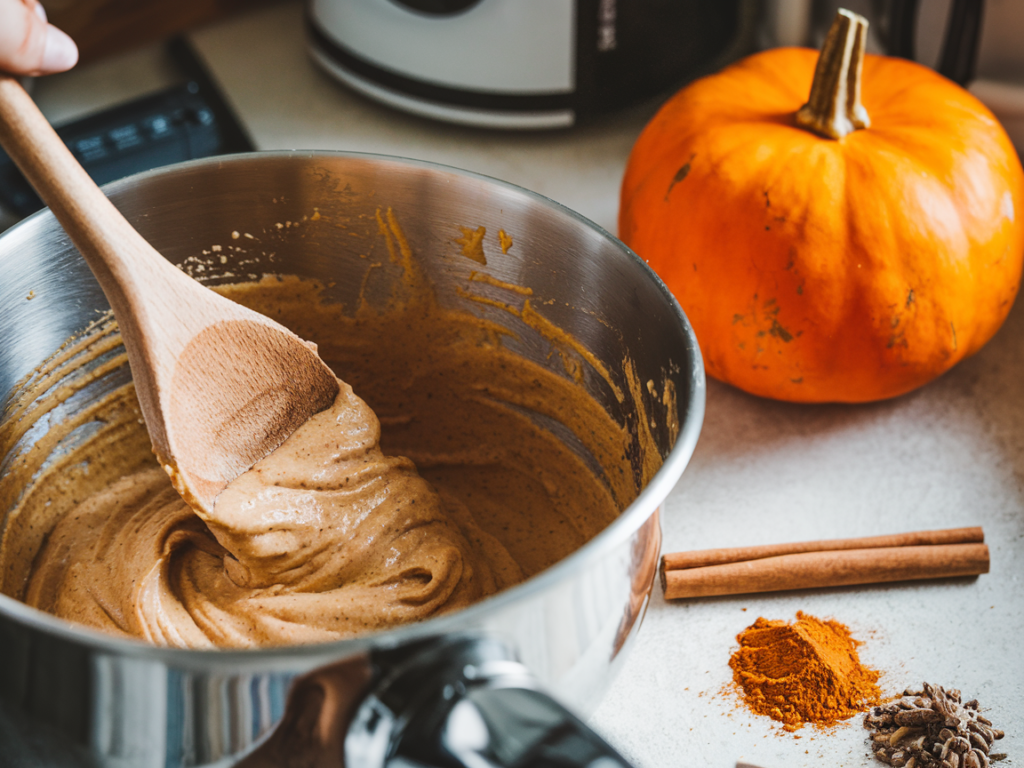
Here’s where the magic happens. Combine your dry ingredients gluten-free flour, baking powder, baking soda, salt, cinnamon, nutmeg, and ginger in one bowl. In another bowl, mix your wet ingredients pumpkin puree, eggs, oil, and sweetener of choice. Slowly fold the dry into the wet, and voila! You’ve got a batter that’s ready to bake.
Baking Tips: How to Get the Perfect Loaf
Pour your batter into the prepared pan and smooth the top with a spatula. Bake for 50-60 minutes or until a toothpick inserted into the center comes out clean. Be patient and resist the urge to open the oven door too often—heat fluctuations can mess with the rise.
For more baking hacks, read our article on why heavy cream improves cinnamon rolls.
“Baking is a science, but it’s also an adventure. Don’t be afraid to experiment and learn from each loaf you make!”
Common Problems and Solutions in Gluten-Free Pumpkin Bread
Why Is My Bread Too Dense?
If your bread feels like a brick, you might be overmixing the batter. Gluten-free flours are sensitive, so mix just until combined. Also, check your leavening agents—expired baking soda or powder won’t do you any favors.
Troubleshooting Cracks and Crumbles
Does your bread fall apart when you slice it? This could be due to too much flour or not enough moisture. Weigh your ingredients for accuracy, and consider adding a tablespoon of applesauce or yogurt for extra binding.
How to Avoid a Gummy Texture
Nobody wants gummy bread! This usually happens if the batter is too wet or underbaked. Always stick to the recipe’s measurements and bake until fully set. A kitchen thermometer can be your best friend—your bread is done when the internal temperature hits 200°F (93°C).
Table: Nutrition Facts for Gluten-Free Pumpkin Bread (Per Slice)
| Nutrient | Amount |
|---|---|
| Calories | 180 |
| Total Fat | 6g |
| Saturated Fat | 1g |
| Carbohydrates | 28g |
| Fiber | 2g |
| Sugar | 12g |
| Protein | 3g |
| Vitamin A | 80% of DV |
| Iron | 6% of DV |
Customizing Your Gluten-Free Pumpkin Bread
Now that you’ve mastered the basics, let’s talk about making this bread your own! Customizing gluten-free pumpkin bread is where the fun really begins. You can tweak the recipe to match your cravings, dietary needs, or whatever you’ve got in your pantry. Let’s explore some mouthwatering options!
Adding Nuts, Seeds, or Chocolate Chips
Want to add some crunch or gooey goodness? Toss in a handful of chopped pecans, walnuts, or pumpkin seeds for a nutty twist. Feeling indulgent? Dark chocolate chips are a game-changer. They melt into little pockets of happiness with every bite. 😍
Pro Tip: Coat your add-ins with a bit of gluten-free flour before mixing them into the batter. This helps prevent them from sinking to the bottom.
Spicing It Up: Cinnamon, Nutmeg, and More
Pumpkin bread and spices go together like peanut butter and jelly. While cinnamon and nutmeg are classics, don’t stop there! Try adding cardamom for a floral hint or a dash of allspice for extra warmth. Experiment until your kitchen smells like a spice market in Morocco.
Making It Vegan or Sugar-Free
For a vegan version, swap the eggs for flaxseed meal (1 tablespoon flaxseed meal + 2.5 tablespoons water per egg). Want to go sugar-free? Stevia or monk fruit sweeteners work wonders without compromising the flavor.
“The beauty of baking is that it’s as flexible as you want it to be. Don’t hesitate to tweak the recipe to match your vibe!”
Storage and Shelf Life of Gluten-Free Pumpkin Bread
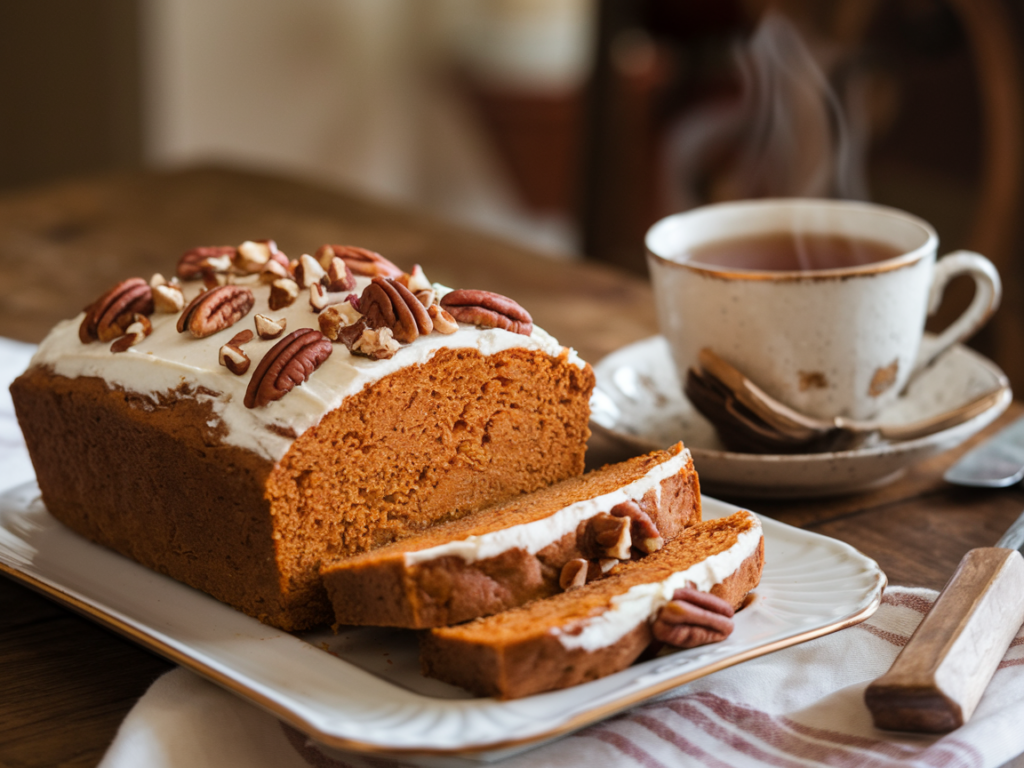
So, you’ve baked the perfect loaf. But how do you keep it fresh? Gluten-free baked goods tend to dry out faster than their gluten-filled counterparts, so proper storage is key.
Ripe bananas piling up? 🍌 From moist banana bread with 2 to 5 bananas, to a fluffy banana bread recipe with bread flour or no nuts I’ve pinned it all! Follow now for comforting bakes like 3 bananas banana bread, banana bread with bananas, and more sweet recipes you’ll want to save.
Best Practices for Keeping It Fresh
Wrap your bread tightly in plastic wrap or aluminum foil once it’s completely cool. Store it at room temperature for up to 2 days. If you’re not planning to eat it right away, the fridge is your best friend—it can extend the freshness to about a week.
Freezing Tips for Longer Shelf Life
Want to save some for later? Gluten-free pumpkin bread freezes beautifully. Slice the loaf first, wrap each slice individually in plastic wrap, and store them in a freezer-safe bag. That way, you can grab a slice whenever the craving hits. Simply thaw it on the counter or pop it in the microwave for 20 seconds. 🍞
Health Benefits of Gluten-Free Pumpkin Bread
You might think of pumpkin bread as a treat, but it’s also packed with some surprising health perks. Let’s break it down:
Nutritional Value of Pumpkin
Pumpkin is a superstar ingredient. It’s loaded with vitamin A, which supports good vision, a strong immune system, and healthy skin. It’s also rich in antioxidants and low in calories, so you can indulge without guilt.
Benefits of Gluten-Free Diets
For those with celiac disease or gluten sensitivity, a gluten-free diet is essential. But even if you don’t have these conditions, cutting back on gluten can improve digestion for some people. Gluten-free baking also encourages creativity and the use of whole, nutritious ingredients.
Popular Variations of Gluten-Free Pumpkin Bread
Variety is the spice of life, right? Here are some fun ways to reinvent gluten-free pumpkin bread and keep things exciting in the kitchen.
Pumpkin Muffins and Cupcakes
Turn your bread into cute, portable muffins or cupcakes. Just pour the batter into muffin tins and bake for 20-25 minutes. Add a cream cheese frosting if you’re feeling fancy. 🧁
Pumpkin Spice Loaves with Glaze
Drizzle a simple glaze over your loaf for a bakery-style finish. Mix powdered sugar, a splash of milk (or non-dairy alternative), and a pinch of cinnamon for a sweet topping that looks as good as it tastes.
FAQs About Gluten-Free Pumpkin Bread
1. What makes pumpkin bread gluten-free?
Gluten-free pumpkin bread uses gluten-free flour blends instead of traditional wheat flour. These blends are made from alternatives like rice flour, almond flour, or tapioca starch.
2. Can I use canned pumpkin puree for gluten-free pumpkin bread?
Absolutely! Canned pumpkin puree works perfectly and saves time. Just make sure it’s 100% pure pumpkin without added sugar or spices.
3. How do I make gluten-free pumpkin bread moist?
To keep your bread moist, use ingredients like pumpkin puree, eggs, and a bit of oil. Avoid overbaking, as it can dry out the loaf.
4. What’s the best gluten-free flour for pumpkin bread?
A high-quality gluten-free all-purpose flour blend with xanthan gum is ideal. You can also experiment with almond flour or oat flour for added flavor and texture.
5. Can I make this recipe vegan and gluten-free?
Yes! Replace eggs with flaxseed meal (1 tablespoon flaxseed + 2.5 tablespoons water per egg). Use a plant-based milk alternative and ensure your flour blend is vegan-friendly.
6. Why is my gluten-free pumpkin bread dense?
Dense bread can result from overmixing the batter or using an incorrect flour ratio. Be gentle when mixing and stick to the recipe’s measurements.
7. Can I freeze gluten-free pumpkin bread?
Definitely! Slice the loaf, wrap each slice in plastic wrap, and store them in a freezer-safe bag. They can be frozen for up to 3 months.
8. How long does gluten-free pumpkin bread stay fresh?
At room temperature, it stays fresh for 2 days. Refrigeration extends its shelf life to about a week, and freezing keeps it fresh for months.
9. What toppings go well with gluten-free pumpkin bread?
Popular options include cream cheese, butter, nut butter, or a drizzle of honey. For a sweeter twist, try chocolate chips or a cinnamon glaze.
10. Is gluten-free pumpkin bread healthier than regular pumpkin bread?
It depends on the ingredients. Gluten-free pumpkin bread can be healthier if made with whole, nutrient-rich flours and less sugar. However, it’s still a treat, so enjoy in moderation!
Conclusion
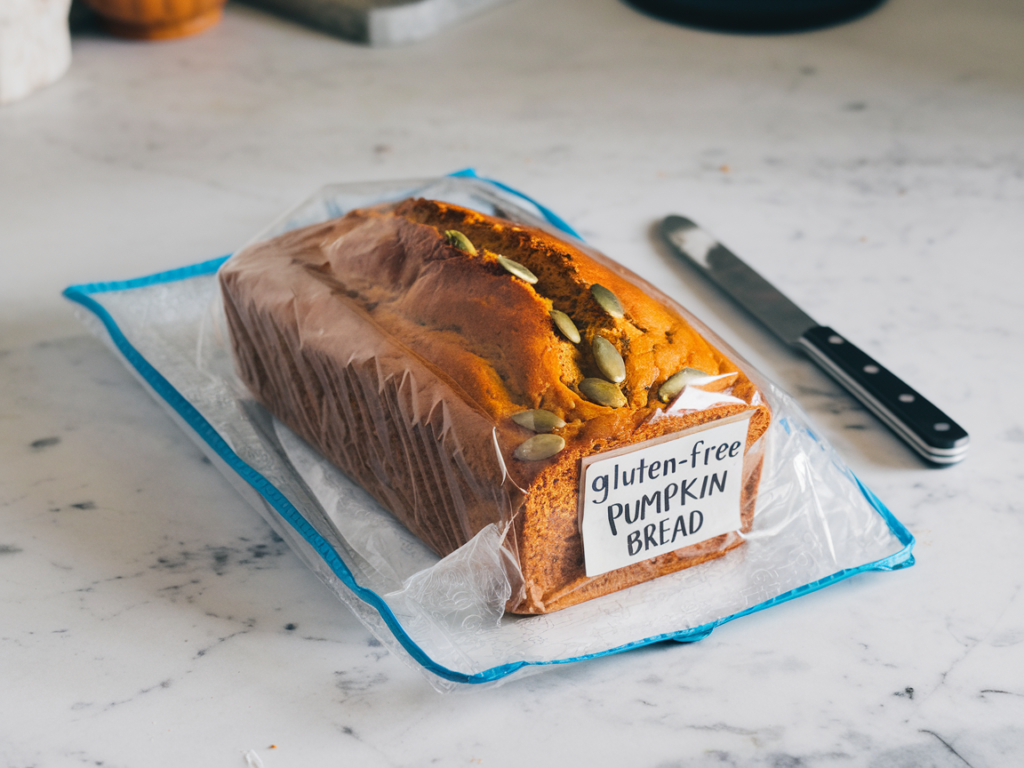
Why should everyone give gluten-free pumpkin bread a try? It’s delicious, versatile, and surprisingly easy to make. Plus, it caters to various dietary needs without sacrificing flavor. Whether you stick to the classic recipe or jazz it up with your own twists, this loaf is a fall staple that deserves a spot on your table. 🍂
So, what are you waiting for? Gather your ingredients, preheat that oven, and let the baking adventure begin. Don’t forget to share your creations with friends and family they’ll be begging for the recipe. And hey, keep experimenting. After all, life’s too short for boring bread! 😊
Gluten-Free Pumpkin Bread
Equipment
- Mixing Bowls
- Whisk
- Loaf Pan
- Oven
- Cooling Rack
Ingredients
Dry Ingredients
- 1 3/4 cups gluten-free all-purpose flour with xanthan gum
- 1 tsp baking powder
- 1/2 tsp baking soda
- 1 tsp ground cinnamon
- 1/2 tsp nutmeg
- 1/4 tsp ground ginger
- 1/4 tsp salt
Wet Ingredients
- 1 cup pumpkin puree not pumpkin pie filling
- 2 large eggs room temperature
- 1/2 cup vegetable oil or melted coconut oil
- 3/4 cup brown sugar packed
- 1 tsp vanilla extract
Instructions
- Preheat oven to 350°F (175°C) and grease a loaf pan or line it with parchment paper.
- In a medium bowl, whisk together gluten-free flour, baking powder, baking soda, cinnamon, nutmeg, ginger, and salt.
- In a large bowl, whisk together pumpkin puree, eggs, oil, brown sugar, and vanilla extract until well combined.
- Gradually add dry ingredients to wet ingredients, stirring gently until just combined. Do not overmix.
- Pour batter into the prepared loaf pan and smooth the top with a spatula.
- Bake for 50-60 minutes, or until a toothpick inserted in the center comes out clean.
- Let the bread cool in the pan for 10 minutes before transferring it to a wire rack to cool completely.
